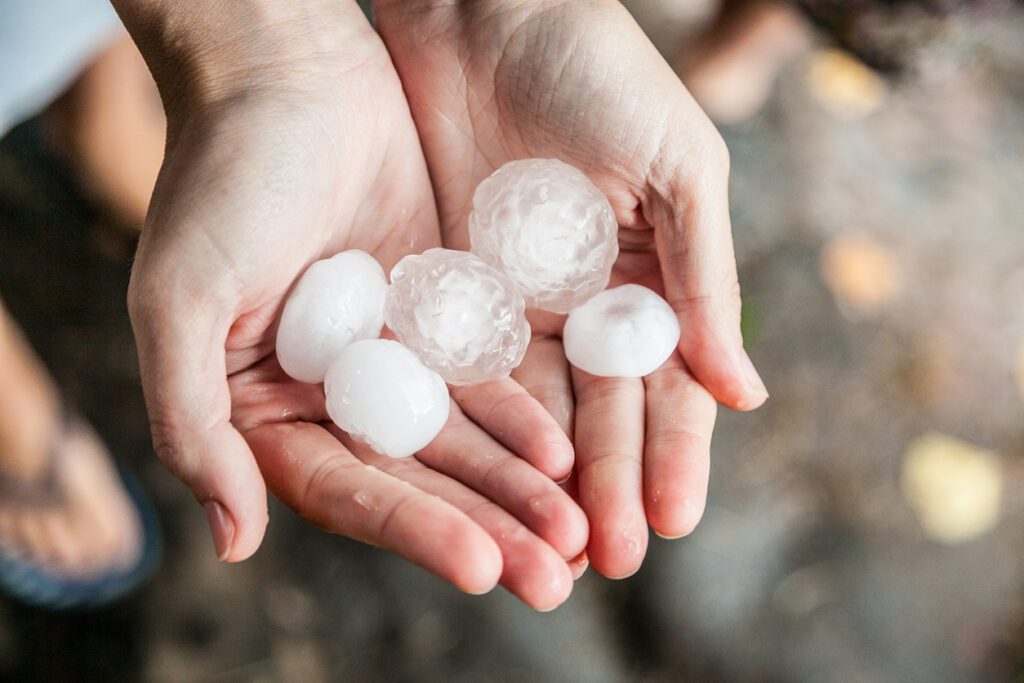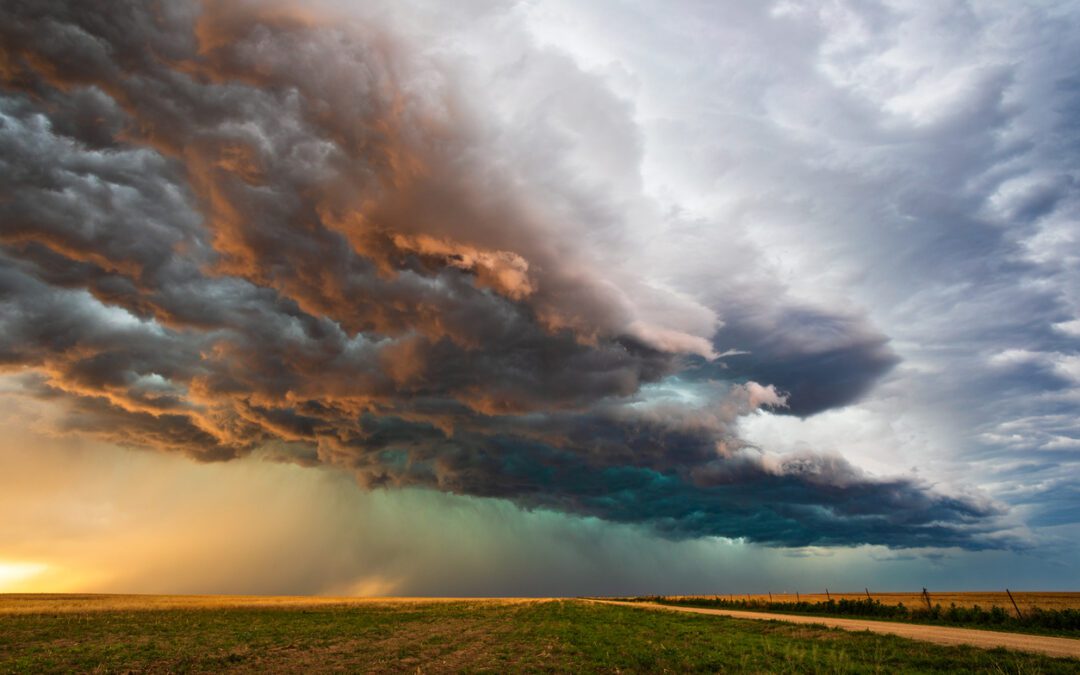Here at Farm Credit of Southern Colorado we want to make sure you know exactly what you’re getting with whatever service or product we provide you with. Since hail season is upon us, here’s some helpful answers to the most frequently asked questions we get about crop-hail insurance coverage so you can feel confident in signing up with us. If you ever have any other questions or would like more information than what our website provides, feel free to call Bobby at 719-892-1677.
Crop-Hail Insurance Frequently Asked Questions:
“How do I determine how much Crop-Hail coverage I need for my farm?”
First, you want to determine how much you have at risk if you had a hail event occur. Ask yourself if you can absorb any of the property loss if your crops incur any amount of hail damage. From there, give Bobby, our specialized crop-hail insurance agent, a call to discuss which policy choices and coverage levels we have available in your area that fit your needs. He can help you confidently determine how much crop-hail insurance you need so you can stay on top of your risk prevention management.
“What are the coverage limitations to your policies?”
 The dollar amount of any crop-hail insurance coverage is determined per-acre per crop, all of which is decided on a state-by-state basis. Typically, just like all other insurance types, you cannot insure your crop for more than its actual value, but we can help calculate all your personal farm’s limitations during your initial consultation.
The dollar amount of any crop-hail insurance coverage is determined per-acre per crop, all of which is decided on a state-by-state basis. Typically, just like all other insurance types, you cannot insure your crop for more than its actual value, but we can help calculate all your personal farm’s limitations during your initial consultation.
“What is ‘insurable interest’ and what does it mean?”
To be eligible for a Crop-Hail insurance policy with FCSC, you must first have an insurable interest in the crop. In other words, you must have a personal monetary risk if your crop is ever damaged. For example, if you own 100% of your crops you could insure up to 100% of the value of the crop. If you are a landlord or tenant with a share lease arrangement that extends to your crops, you can only insure the percentage of interest you have in the crop itself and nothing more. If you have a 50% / 50% share arrangement, then the landlord and tenant could both insure their 50% interest in their crop to cover the entire farm. However, if your landlord has a cash lease arrangement, they have no monetary interest in the crop and therefore are not eligible to purchase any amount of Crop-Hail coverage on said crops.
“What do I need to do after I purchase my Crop-Hail insurance policy?”
You’ll next want to thoroughly review your policy carefully as soon as you receive it to make sure that all crops you want covered and the coverage levels of each are correct. You’ll also want to check to confirm that the legal descriptions of the location of your crops, or farmland, and the acres notated are correct as well. It is difficult to correct mistakes after a loss has been incurred so just check your documentation before just filing it away. Feel free to call Bobby directly if you ever have any questions about your policy with us or if you find any errors.
“How long does my policy last?”
 Our typical Crop-Hail insurance policies are one-year contracts. However, we do offer continuous crop-hail coverage, like the underlying MPCI policy, so if that is a product you’d be interested in, be sure to ask about it during your initial consultation with us so you can decide which option works best for your farm or ranch.
Our typical Crop-Hail insurance policies are one-year contracts. However, we do offer continuous crop-hail coverage, like the underlying MPCI policy, so if that is a product you’d be interested in, be sure to ask about it during your initial consultation with us so you can decide which option works best for your farm or ranch.
“What do I do if I think I have had hail damage?”
Initially, be cognizant of the weather conditions in your area in Southern Colorado. Since hailstorms can be very localized, especially in our state, you may have damage on your field that you may be unaware of. If you think you received hail damage, contact Bobby immediately for help. Your FCSC Crop-Hail Insurance policy does require you to submit a ‘notice of loss’ or NOL within ten days of the damaging storm so you do need to act quickly. It’s also helpful to know that you will need to include the exact time and date of the storm in that notice, so be sure to take notes if anything happens. If your farm has damage from separate storms, the time and date of each storm must be submitted separately as well, so be aware of that line item for all future hailstorms as well.
“What happens after I submit the notice of loss (NOL)?”
Once we receive your NOL doc, an FCSC adjuster will be assigned to your claim who will promptly contact you to set an appointment to inspect the damage. During the inspection, you will need to be present with the representative to complete your NOL claim fully.
“What will the adjuster do during my damage inspection?”
 When your assigned FCSC adjuster arrives to complete the inspection, he or she will generally do the following:
When your assigned FCSC adjuster arrives to complete the inspection, he or she will generally do the following:
- They will physically walk around your field of crops with you to visually access the hail damage.
- They will take actual plant counts from different parts of your field. (Larger fields do require more counts.)
- They will take notes on different factors based on the crop type you have and the growth stage of your crop.
- They will then average out the plant counts to calculate the percentage of loss you’ve obtained. (If the damage occurs early in the season, you and your adjuster may agree to delay your full adjustment until the hail seasons ends for a more accurate loss assessment.)
- They will finally provide you with the appropriate paperwork and indemnity documentation for your claim with all necessary information to make the next steps.
“How do you calculate my indemnity?”
The percentage of loss determined by your damage inspection will be used to calculate the indemnity. For example, if you purchased basic coverage (no deductible) and the hail damage to your crop field was determined to be 15%, your indemnity would be 15% of the dollar amount insured per-acre. Bobby will assist with this step, share insights as to why an amount was decided on, and will answer any questions for your specific claim so you fully understand what has occurred.
Once more, if you have any alternative questions about what to do during Colorado’s hail season and which crop-hail insurance coverage your farm needs, give Bobby a call. He specializes in crop insurance and is always available to help get you what you need. For more of Farm Credit of Southern Colorado’s crop-hail insurance policies, check out our Crop-Hail page HERE as well.
This blog post is for informational purposes only and should not be considered financial, legal, or investment advice. Any information contained in this post is subject to change without notice and should not be relied upon without seeking the advice of a qualified professional. The views and opinions expressed in this post are those of the author and do not necessarily reflect the official policy or position of our Association. The author and Association are not responsible for any errors or omissions and are not liable for any losses or damages arising from the use of the information contained in this post.

